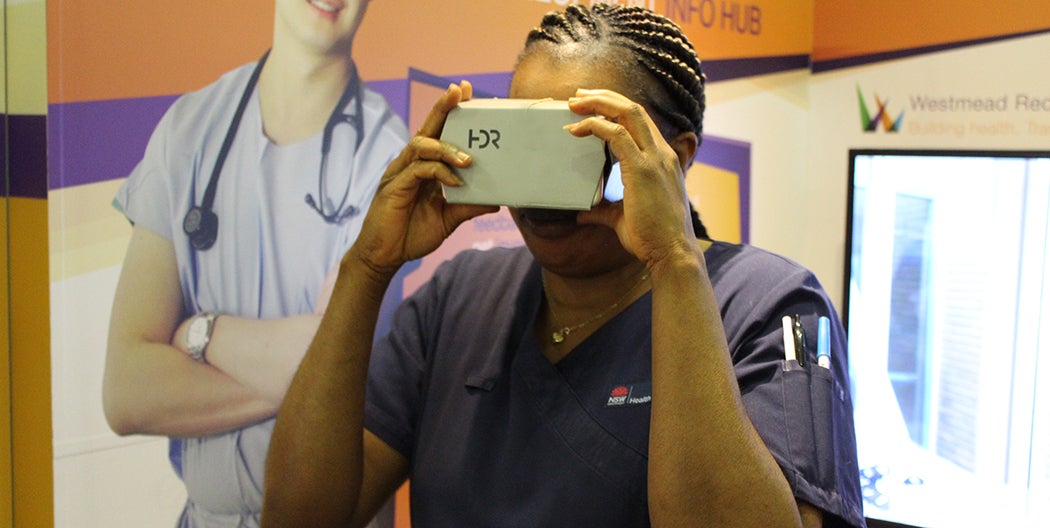
A Virtual World at our Fingertips
Embracing technologies that make virtual environments just one click away means we can now involve stakeholders more effectively in the design process.
The past couple of years have witnessed substantive technological advances in the field of Virtual Reality (VR). These technological leaps have been coupled with an exponential growth in the interest in and use of such tools across the architecture industry. Emergent technologies in general, including VR in particular, will continue to improve the way we share design ideas and hence garner more relevant feedback in an increasingly timely manner.
At HDR, we have always been at the forefront in our commitment to adopt the latest technologies. Improving the quality of our VR experiences means, for us, involving different stakeholders as early as possible in the design process and therefore making the transition across different stages from concept to construction more seamless. Furthermore, from an economic perspective, we believe our investment in helping clients and stakeholders fully visualise the end result, before buildings even start to take shape, ultimately translates into savings in time, money and labour.
The decision to completely integrate VR, the moment this technology became available, into our workflow and to streamline it into our processes demonstrates our commitment to maximise the utility of such tools for our stakeholders. This comprehensive integration also means that a client’s VR experience is but a click away — so, essentially, a client may call us to request a meeting and one hour later be walking through a virtual model of their project in our VR Studio.
Fully equipped with motion sensors, mounted screens, goggles and motion-tracked handheld controllers, our VR Studio is located in the Research Hub on the first floor of our Sydney office. Our VR space is constantly abuzz with activity, although we did on several occasions dismantle our gear and transfer it to a client’s premises to deliver the full VR experience right to their doorstep. Dismantling, transporting and setting up VR gear is, however, not that necessary anymore since we now have more practical alternatives to offer a ‘mobile’ VR experience of decent quality.
In addition to our HTC Vive setup that uses ‘room scale’ tracking technology to allow users to move in and interact with three-dimensional spaces, we also use Samsung Gear to provide a wireless and more mobile alternative. Another useful tool is the Google Cardboard technology that simply requires a smartphone, a web URL and a foldable cardboard viewer that people can slip into their pockets and take back to their offices or homes to view at their convenience. In fact, the team at our Westmead Redevelopment project decided to host pop-up booths to share future plans via cardboard goggles with hospital staff and the general public. The team used the immersive VR experience to complement their information packs about the redevelopment and engage people more effectively.

VR tools offer experiences and tell stories that may otherwise be difficult to capture and present, but more importantly facilitate collaboration and interaction — users have the opportunity to choose where and when to move and look, and accordingly comment, criticise, make suggestions and ask questions. Sounds like any designer’s nightmare, right? Wrong. We have actually had numerous instances where clients have initially resisted a certain design idea only to accept it after experiencing it in a VR setting and gaining a better understanding and actual visualisation of the space and its scale, dimensions and its different features and details. It also helps construction contractors better understand the end product they are required to build. Manipulating sun movement, controlling light sources, changing colour schemes and substituting textures and finishing materials further heightens the VR experience and makes it more realistic, leaving less for users’ imaginations.
While details like the aforementioned greatly enhance user experience, designing spaces that are easy to navigate is an essential factor in successful VR experiences. A while back, we found clients were losing their way while wandering inside the virtual model of a particularly complex project. Our solution? We created a virtual ‘mission control’ room with multiple screens representing a menu of choices. By resting their gaze on the screen of their choice for a few seconds, they’ll enter that particular space. Or they can navigate through a predefined path. To return to mission control when they’re done exploring, they only have to look at the floor for a few seconds and they’re ‘teleported’ back to the central room to select their next journey.
The future of VR holds even more exciting advances with the continual development of smaller, lighter and more mobile solutions. And just imagine speaking directly to your interactive space and telling it to, for instance, “show only floors and stairs”. Even better, why not try it out for yourself? The voice-activated command feature has already arrived.
Images courtesy of Westmead Redvelopment project team



